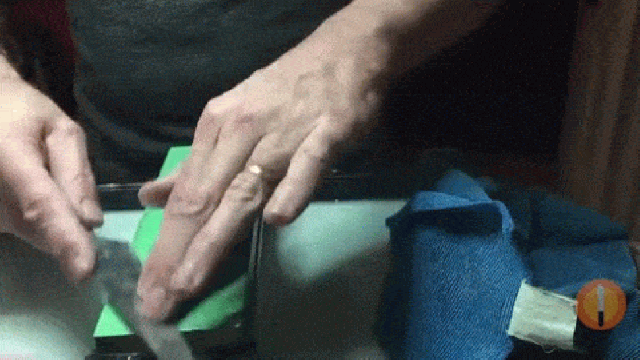As we’ve often said, dull knives are dangerous knives, not to mention a pain to use when it’s time to cook. Keeping them sharp is surprisingly easy, and this guide from the folks at KnifePlanet is detailed and rich, but boils down to three simple steps: maintenance, honing, and eventually, sharpening.
The guide walks you through the details of each step in fantastic detail — the kind you’ll need to bookmark and come back to instead of trying to power through the whole thing at once. The guide starts with a spirited defence of sharpening, something you probably don’t really need, but there are definitely people out there who think sharpening a knife is going to cause more damage than it’s worth. Oversharpening maybe, or doing it too often, but in general? Not so much.
From there we get into some solid knife maintenance tips, like learning how to keep a knife in good condition just by honing it, so you don’t run the risk of oversharpening. We’ve shown you how to hone a knife in the past, but there’s a video in the guide below to help you get started, or how to use a honing steel properly, especially if you’re not totally sure how to find a good angle and how to hold a honing steel (or ceramic rod, whichever you’re using.) The guide also shows you how to hone a knife with a fine grit water stone.
The second step is a simple one — learning how to tell when your knife doesn’t just need honing, but actual sharpening. It’s more difficult than you might think, but boils down to what Peter Nowlan calls the “Tomato Test:”
If your knife can still slice a tomato without the tomato bending, if it still easily breaks through that skin and glides through the tomato you are good, nice work. Now if it doesn’t, try taking out your hone again and steel the knife. DO NOT use more pressure than you are used to using, that is not going to make a difference, just use the same technique and then see how the knife feels on that tomato. When I slice a tomato I start at the heel of the knife and pull the blade toward the tip and by the time the knife has moved an inch it is in through the skin of the tomato.
The third step, of course, is actually sharpening your knife, either by finding someone to sharpen it professionally for you, or by learning to sharpen it yourself, ideally with a water stone.
If you decide to take it to a sharpener, Nowlan has a few suggestions to help you get to know your sharpener first so you can trust your knives are in good hands. Hit the link below to read everything.
The 3-Step “Sharp Routine” To Keep Your Knives Sharp [KnifePlanet]

Comments